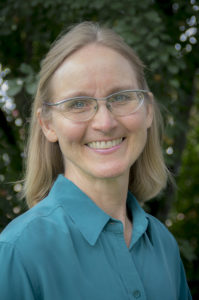By Margot Schaal, GCFP
Do you ever wonder why the same Awareness Through Movement® lesson helps people with myriad difficulties? We individually process the movements and discover the easiest or most optimal route for our own system to proceed. People come to this work with chronic pain in so many different places and ways! Myalgia, accident, post-surgery, incest, neuralgia, arthritis, etc, etc.
Maybe one of these is familiar to you. Many people with these kinds of pain have turned to me for help. I’d like to share a few examples from my students. Many had already tried medicine, physical therapy, massage, and other approaches and decided to try Functional Integration® – one-on-one individual sessions.
My own experience with bodily injury was that I was not listening to what I knew I needed to change. Ignore things long enough and it hurts A LOT, maybe for a long time; that’s chronic pain. As one’s nervous system becomes accustomed to what began as an incident/accident the nerve pathways for pain develop into a regular expectation. Traveling along the same nerve pathways over and over, makes an easy groove that signals pain. What got me to finally listen was the physical discomfort of pain over time. I had exacerbated it by continuing to do the same things, mostly the same way.
Here is where fear enters. Fear makes us overly cautious and think we have no choices. Feldenkrais lessons show us the fallacy of that! We always have multiple choices, even if the choice is not about an action we make, but how we respond to a stimulus.
A woman with myalgia was sufficiently brave to let me touch her, though her every bodywork session had resulted in pain. (We don’t consider Feldenkrais “body work” since we are working with the whole person in a process of somatic learning). She felt better after our session than before it, and better than she had in a very long time. She was elated that improvement was possible, and that it didn’t demand more difficulties of her. The question from my client regarding how I knew to go to the injured wrist without her telling me about it illuminated the whole-self aspect of the Method.
During our break in a workshop I offered to help resolve back pain, a participant spoke to me privately. She had had back pain for 19 years due to over-work, daily lifting her quadriplegic spouse, who was twice her size, and maintaining a busy house. She asked if I could help her – yes! It may not be what you hear from a Feldenkrais Practitioner even if it is true, but I knew I could give this person the necessary support to function better. What does that mean? Function – it refers to everything a human being does, and all of the person. All action, and “non-actions” if such exist, involve your thoughts, emotions and your physical body, hence the term “body-mind” practice.
Clients often appear after musculoskeletal surgery and their allotted physical therapy sessions. One man had had soft tissue surgery – lung surgery for cancer. For good reason there was a delicacy about his self-management, movement and breathing, and our work together was appropriately delicate. Through it his breathing expanded, his chest softened, and he was astonished by the effectiveness of the simple Feldenkrais touch.
Almost a decade after a bike accident resulting in multiple surgeries, Mike, who was 69, still hadn’t recovered sufficient movement and confidence to get on the bicycle again. It was surprising since this sport was his joy. Instead of moving like a sportsman, he hobbled along in pain. He was operated on immediately after the accident, reassembling bones and muscles. Mike had done dozens of physical therapy sessions which his insurance allowed, and probably more than it granted. He denied being in pain, but curiously mentioned he felt less pain after each session. We experimented with many different kinds of movements and, while he noted the challenge of coordination with new patterns that his nervous system was learning, the tension held in his back released, his energy increased and many days he looked younger. “I’m walking differently, and it seems more natural…People tell me I look more upright and refreshed.” Mike was amazed by how quickly he improved comfort, balance and even activation of the shoulder he claimed had done nothing for years.
How about arthritis – what the heck does that word even mean? It means joint pain. It’s a pretty common complaint for people over 50. However, many people are able to live without the aches and pains they thought were inevitable.
What can one do to prevent chronic pain?
Pain signals to us that something is not optimal in our being or moving. A clue to unlocking our stuck-ness is developing a variety of new ways to breathe. Have you noticed that every Feldenkrais lesson addresses breathing, whether you hear the word or not? Well, that is so. We think we are attending to how we move, and we are, and our breathing changes! BREATHE – vary breathing. ENJOY it and enjoy your life. This life is both ordinary and precious!
It’s an investment in your health Take some time to do Feldenkrais now, so in the future life can be easier than it might be. Try a regular Feldenkrais class or a series of private Functional Integration lessons. It’s not just a way to recover from pain, but also a means to PREVENT injury, and other pain inducing experiences.
New instructions to your body through the nervous system lead to new directions in movement, thinking, emotions and action in the world. Do you need to make a change, like get out of pain? Maybe, as I did, you have pain because you didn’t make the change you needed to. ANY kind of change, be it relationship, work, job, family, exercise…Change that is appropriate for you now seems like a lot to ask of oneself, but who is in charge of your life, anyway?
Kindness first. Safety first. Happiness first.
All good things first, the mean and painful stuff can teach us a lot: it does not enhance being alive.
About Margot:
 Margo Schaal, Guild Certified Feldenkrais Practitioner CM, graduated from the Marin II Feldenkrais® Professional Training Program in 2003 and is a Certified Assistant Trainer of the Feldenkrais Method®. She holds a Bachelor of Fine Arts, and is a Reiki Master and Qigong teacher. Margot now offers classes and private sessions online. She teaches Feldenkrais and Qigong together to bring forth the deeper levels of the Feldenkrais Method that engage each person’s inner teacher and capacity to heal. Her extensive movement background includes martial arts, dance, playing violin, horse-back riding and sports for pleasure. Her website is www.margotschaal.com
Margo Schaal, Guild Certified Feldenkrais Practitioner CM, graduated from the Marin II Feldenkrais® Professional Training Program in 2003 and is a Certified Assistant Trainer of the Feldenkrais Method®. She holds a Bachelor of Fine Arts, and is a Reiki Master and Qigong teacher. Margot now offers classes and private sessions online. She teaches Feldenkrais and Qigong together to bring forth the deeper levels of the Feldenkrais Method that engage each person’s inner teacher and capacity to heal. Her extensive movement background includes martial arts, dance, playing violin, horse-back riding and sports for pleasure. Her website is www.margotschaal.com

